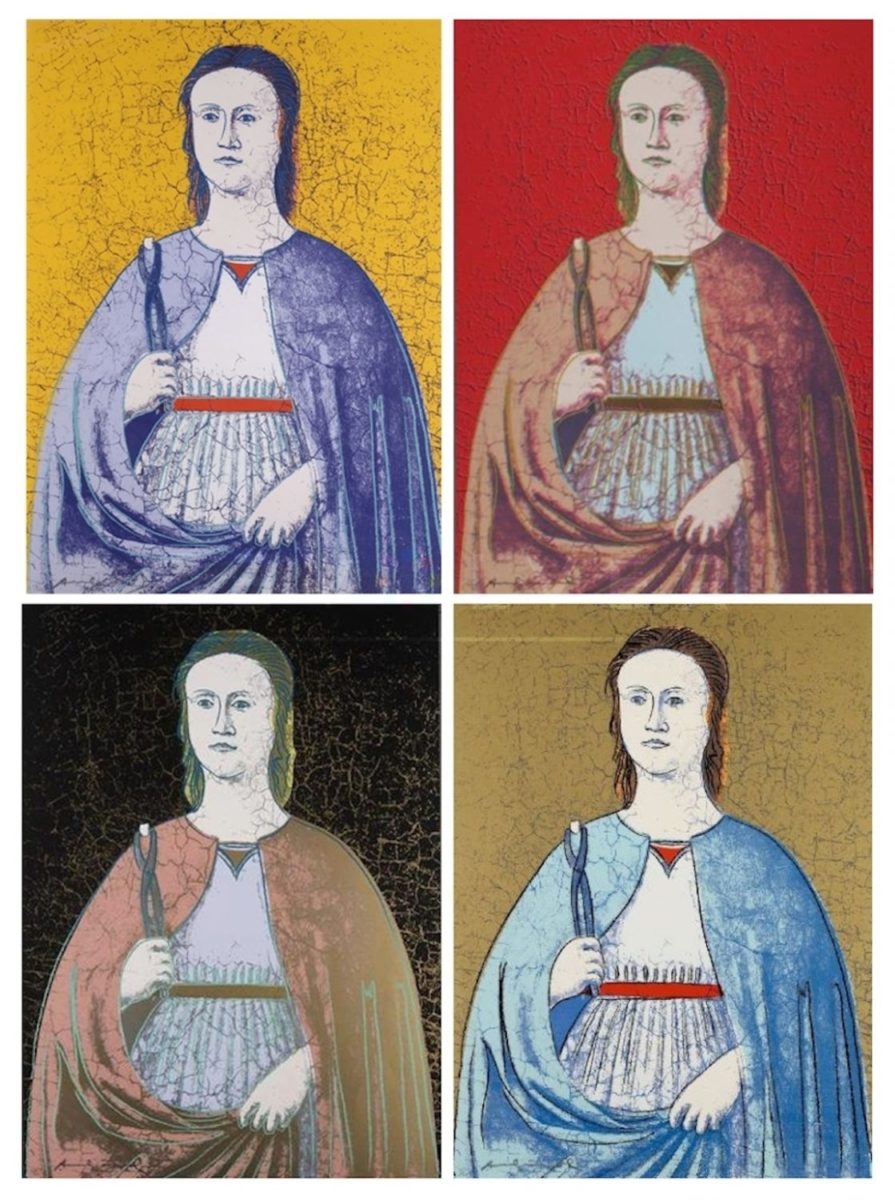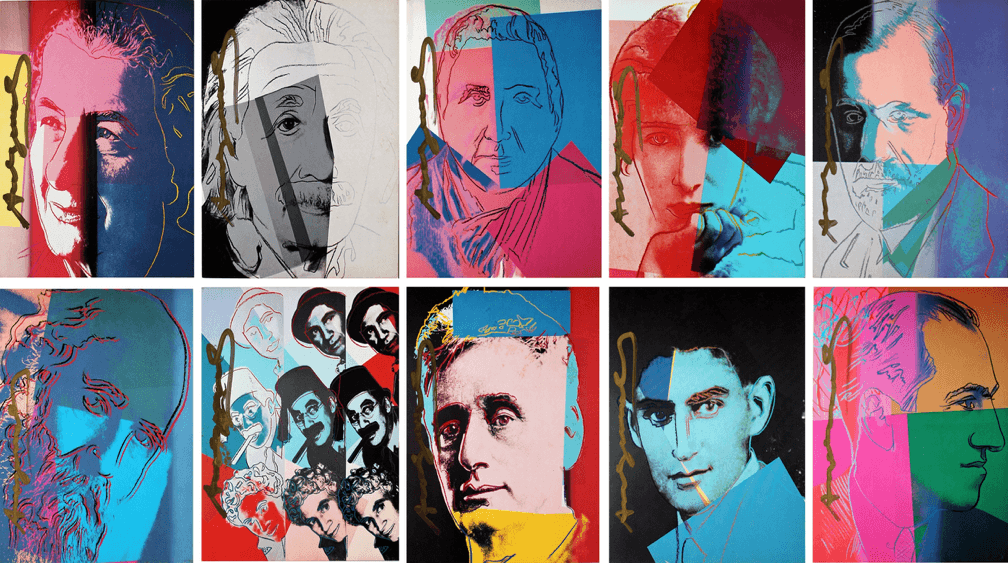Aurora Garrison | December 2017
It may surprise readers, that the infamously aloof and industrious Andy Warhol was an ardently practicing Byzantine Catholic. Religion played an incredibly personal and private role in Warhol’s life. As such, the artist’s work may be best understood through the lens of faith and iconography.
Andy Warhol and his mother, Julia, spent hours in their neighborhood church. According to Warhol biographer Bob Colacello, Julia Warhol attended vespers on Saturday night and masses on Sunday. Colacello states, “Andy almost always went to church with his mother. For hours on end, he sat and stared at the iconostasis, the screen the closes off the inner altar in Eastern Rite churches. It was covered with icons of the saints, flat two-dimensional portraits, with solid gold backgrounds, hung in horizontal rows, one after another, with no space between.”
Focusing on two works Warhol produced towards the end of his career in the 1980s, we find the artist’s lifelong fascination with iconography and fame.
In the case of his Saint Apollonia – the original painting is in the National Gallery in Washington – Warhol replicates the iconic image by Piero della Francesca. Rather than attempt to warp the image into one of his own, Warhol stays true to the original painting, barely cropping the image and even delineating the small antique cracks of the painting’s surface. St. Apollonia, the patron saint of dentists, who is said to have had her teeth torn out by Romans after refusing to renounce her faith, took her own life by jumping into a bonfire. Completed in 1984, the four prints show the saint clasping a set of pincers, alluding to the legend of her teeth being pulled out.
Saint Apollonia’s grim tale has long drawn the attention of artists, and Apollonia’s popularity grew as Christianity spread, eventually attracting something of a cult following, particularly in South America. In his rendition of St. Apollonia, Warhol does something just short of magic. He takes the mystical, religious art of 2000 years and makes it new and relevant again.

Revolver Gallery, Santa Monica, California.
Warhol continually focuses on notions of celebrity through the use of the singular iconic image – first repeated, then reproduced and reversed. Andy Warhol’s Ten Portraits of Jews of the Twentieth Century (1980) depict renowned luminaries of Jewish culture (from top left): Golda Meir, Albert Einstein, Gertrude Stein, Sarah Bernhardt, Sigmund Freud, Martin Buber, the Marx Brothers, Louis Brandeis, Franz Kafka and George Gershwi. Warhol’s iconic portraits attest to the lasting achievements and fame of these singular figures. Originally published as a portfolio of silkscreen prints on paper, Warhol was so pleased with the commercial success of his Ten Portraits that he decided to create additional versions of the series as silkscreen paintings on canvas.

Warhol himself expressed little interest in the subjects of the series, he said he just liked their faces. The concept was not his own; the art dealer Ronald Feldman had suggested it to him after an Israeli dealer asked for a series of portraits of Golda Meir. It was Mr. Feldman, in consultation with Susan Morgenstein, director of the art gallery of the Jewish Community Center of Greater Washington, who decided on the list of historical figures. Somewhat surprisingly, the paintings were warmly embraced by Jewish audiences and have been widely exhibited in museums and galleries as well as synagogues and Jewish institutions around the country.
Warhol followed his usual procedure for portraits, silk-screening a photograph over previously applied colors and tracing crayon-like lines over the photograph’s contours. The underlying colors are divided up into flat, geometric compositions, creating tension between abstraction and reality. If the series, Ten Portraits of Jews of the Twentieth Century or the portrait of Saint Apollonia seem almost superficial, it is because they are extensions of Warhol’s preoccupation with the celebrity and fame.
Warhol hijacked the religious iconography of his youth and made modern icons into art. The Ten Portraits of Jews of the Twentieth Century series, much like the artist’s prints of Marilyn Monroe – shortly after the actress’s sudden death – and Elizabeth Taylor – who was dealing with scandal at the time of the painting – do not depict the figures as tragic but instead memorializes and elevates them into icons. Much like the Christian concept of the transfiguration – Christ appears to his disciples not as he is, but in a glorified manner – Warhol presents his pop culture and historical figures in a glorified and reverent way.

